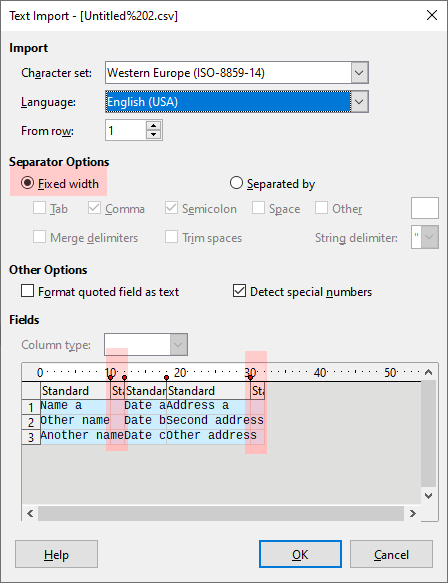I read your question as you may want to set the column to be for example 20 chars wide.
But as we now usually deal with proportional writing, where a letter m is wider than i, this can’t be done easily. Font-Designers can put m-width etc. in the font-Data, but I never tried to access this from Calc…
So this rises some questions:
What unit Excel is using for this?
Are you using proportional writing?
Is the column expected to adapt, if you change the font?



